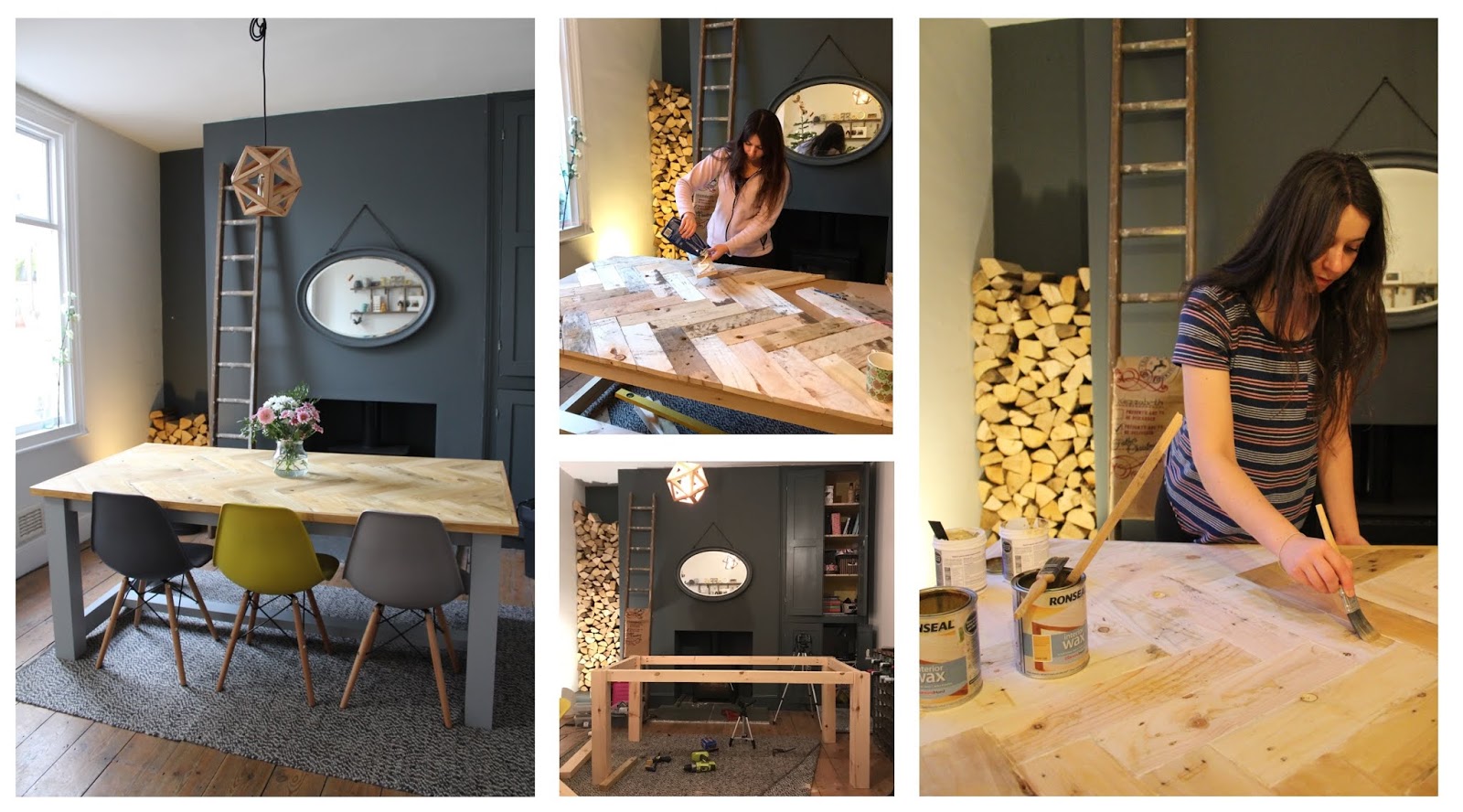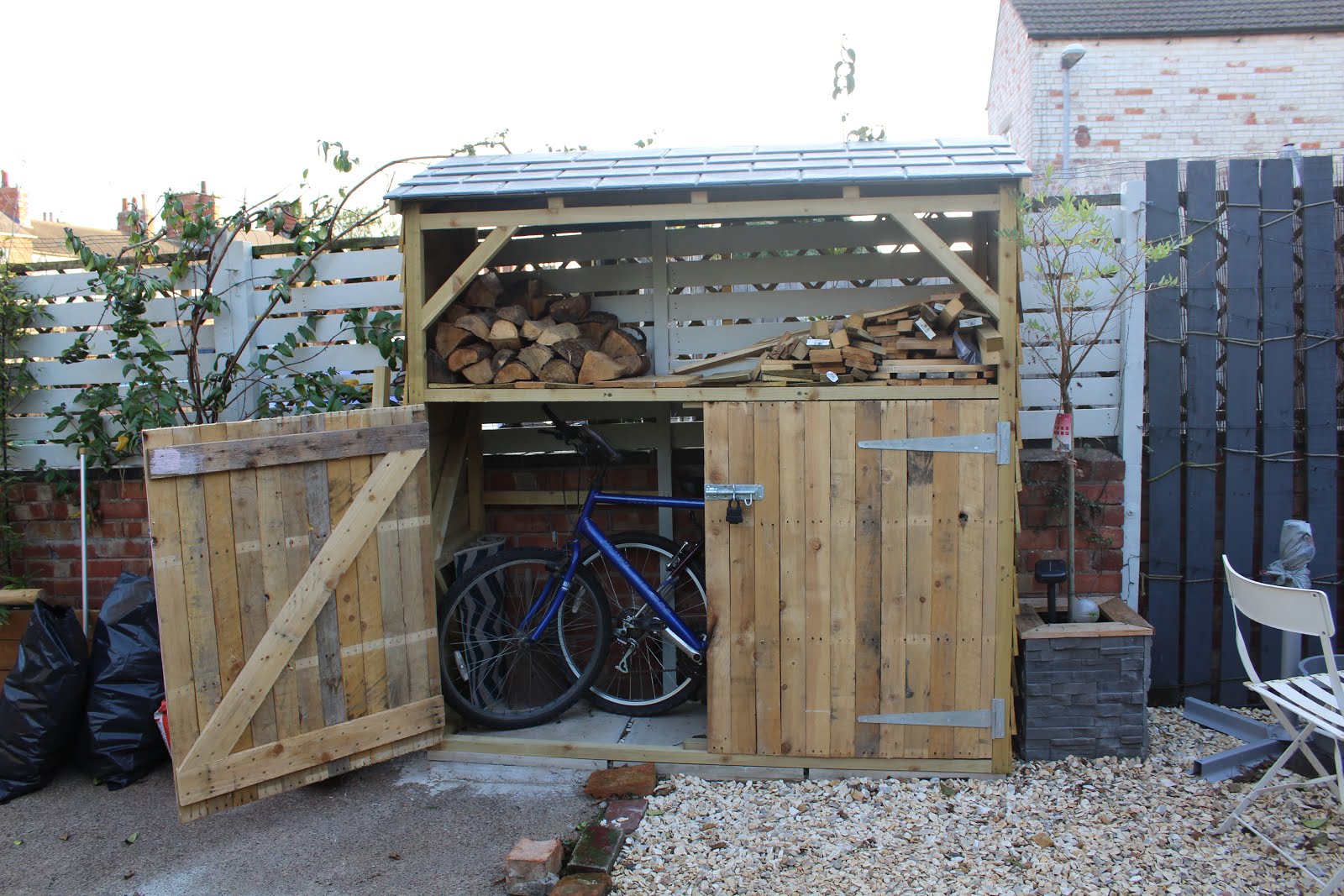Back in 2018, we bought an old wooden extending ladder from eBay for £7.50. We used one section of the ladder as decoration, kind of like a shelf, for displaying random bits and bobs – see my wall ladder decoration post here. The other section has simply been propped against the wall with a different project in mind – making a DIY sliding ladder rail which we could then use to access the top of our log stack, which is filled to the ceiling during the winter months.

I wanted to do a blog post on this DIY because when I came to researching library ladder rails to buy, the kits literally cost hundreds! This ‘cheat’ method cost us less than £35 (not including the ladder itself which was secondhand and excluding delivery) and it’s perfect for those of us on a budget!
Disclosure: This post contains affiliate links, which allows me to receive a small commission if you visit a link and buy something on my recommendation. Purchasing via an affiliate link doesn’t cost you any extra, and I only recommend products I have bought or used myself.
This blog is part of the eBay partner network and the Amazon Associate Programme. All affiliate links to these sites are clearly marked with an asterisk (*). Click here to read more about how affiliate links work on this blog.
How to Build Your Own DIY Library Ladder Rail
(spoiler: it’s actually so easy, you could barely call it a DIY!)
Step 1 – Purchase Ladder Rail Parts
So for this DIY, the ‘rail’ part of the DIY will be made using a 26.9mm galvanised tube (basically scaffold pipe!) with two end wall plates and a 90-degree elbow, all of which were purchased from The Metal Store. All parts are on the page I’ve just linked. You may only need two wall plates (or you may require two elbows) depending on the layout of your rail, but for us, these parts together came to around £17.


We then purchased some ladder hooks from Denios. The hooks again, are quite a niche product and were very hard to find online! This was the most expensive part at around £14 for a pair. However, there’s a slight catch – they’re only sold in packs of two (4 individual hooks) so we actually had to spend double. However, I’m hoping to sell the second set of hooks so haven’t counted for this in the costings – but is definitely worth noting!


WORD OF CAUTION: Please don’t try to attempt this DIY with a different type of pole (for example a curtain rail, or copper piping) because these will NOT be structurally sound for the weight of a ladder and human climbing up it. The galvanised tube we’ve used has a thick wall and will not bend or snap underweight. Similarly, the ladder hook we’ve bought is designed for use with ladders and is made from thick aluminum. Please don’t attempt to use a coat hook or similar which will not be strong enough. It’s important to use strong, durable, and reliable materials if you actually want to use your ladder.
Step 2 – Cut Your Ladder Rail to Size
Measure up the area you want your rail to sit and then mark this measuring onto your galvanised scaffold tube with a permanent marker. We’ve marked on three different ‘sides’ of the tube, then added some masking tape around the pipe so the line will be easily visible when it comes to cutting.




Secure your galvanised tubing on a firm base and using an angle grinder cut the tube. We needed two individual pieces of the tube for our ladder rail – which you can see below.
TIP: The Metal Store also offers a cut-to-size service on their galvanised tubing, so if you don’t own an angle grinder, or simply don’t want to cut your own tube – this is a great option. And bonus points, it’s free too!


Step 3 – Add Wall Plates and Elbows
Once your rail is cut to size you can add the fixings on either end. These just slots over the rail and can be secured using an Allen key to firmly tighten them in place.


As I already mentioned, we needed a very small piece of tubing to fit between one of the elbows and wall plates. This will allow our ladder rail to be an L-shape. Depending on your ladder rail, you may not need to do this.




Step 4 – Fix to the Wall
Now we have everything cut to size, we simply need to fix the scaffold galvanised tube to the wall. For this we’ve used a drill, some wall plugs, and some screws, making sure everything is level first!. These are the wall plugs and screws we’ve used, also from The Metal Store. If you also use this kit, you will need a 7mm drill bit.
TIP: Use an envelope stuck to the wall with masking tape to catch the brick dust!



Step 5 – Attach the Ladder Hooks
Hold your ladder against the rail with a suitable incline for climbing. Then, hold your hooks in position on the rail, and mark up where they need attaching on the back of the ladder.



You can attach your ladder hooks with either some long screws (for a wood ladder) or rivets (if using a metal ladder).



Now you can hook your ladder onto the rail! If you have little kids like us, you’ll want to secure the ladder further so that it can’t simply be lifted off the rail by little hands. To do this, also added a bolt through the top of the hook. Now the only thing you’ll have to worry about is kids climbing up it!


Step 6 – Apply some WD40
Finally, we recommend spraying some WD40 PTFE lubricant* onto the rail. This will reduce metal-to-metal friction and allow for a smoother glide.


And that’s it! I told you there wasn’t much to do this “DIY”! Here’s a little before and after:


So, despite our log stack being a little low at the moment – we love our new sliding ladder rail! It’s going to be super useful winter and will allow us to position the ladder directly in front of the log stack, rather than at the side, and need to precariously reach over! Now the ladder is also fully secured, we don’t have to worry about little hands pulling the ladder over either.
Currently, we have to lift the ladder upwards to slide it along so the feet don’t drag on the ground, but you could always add some rollers on the feet for a smoother glide.
It’s a stylish, practical, and quirky addition to our living room! Did I mention that we love it?







If you’re looking to create something similar, this DIY would also work perfectly for other uses, like a shelving unit, in a pantry, or even for a very tall wardrobe/closet. I hope this blog post is useful – and if you do recreate this DIY, do send us a pic! You can find me over on Instagram here where you’ll also find some videos of this DIY too.
Happy DIYing!
*This post contains affiliate links where an asterisk (*) is used.












No Comments